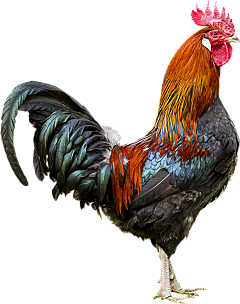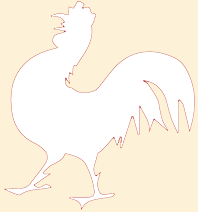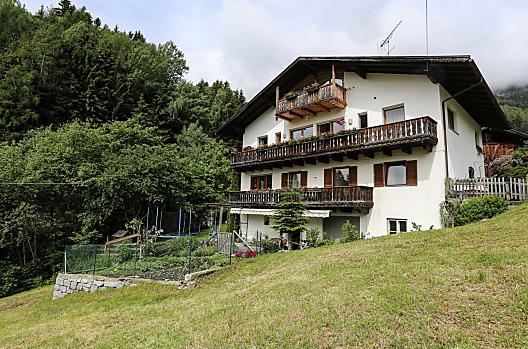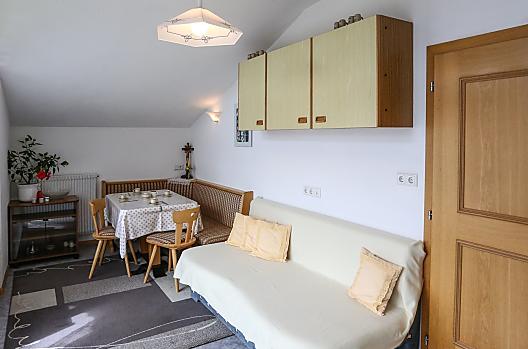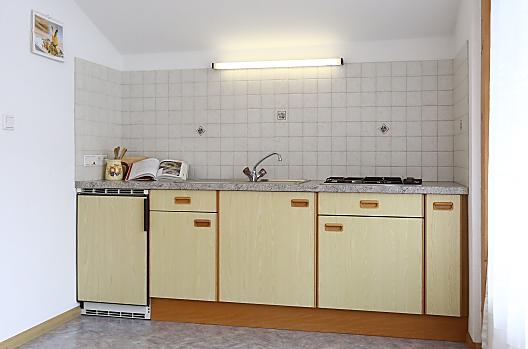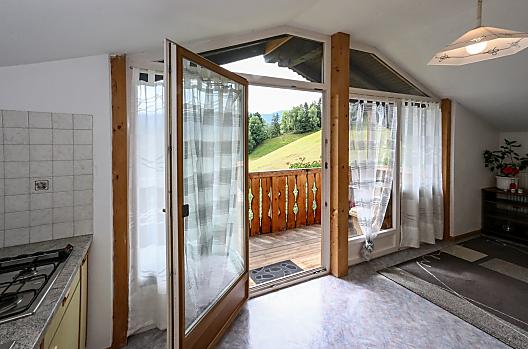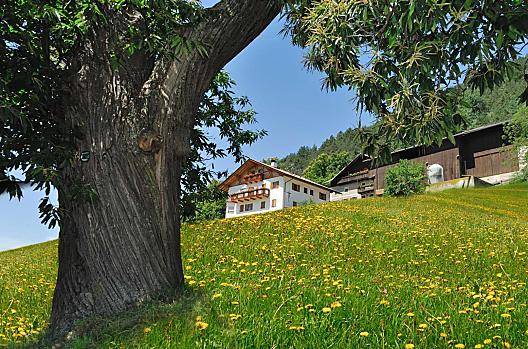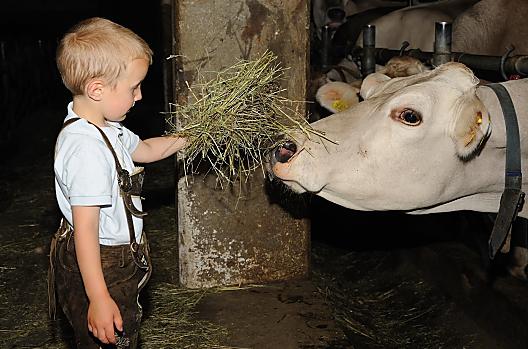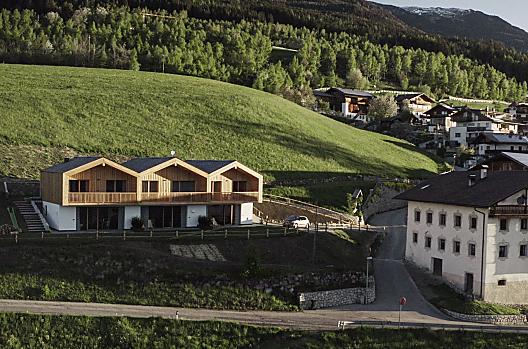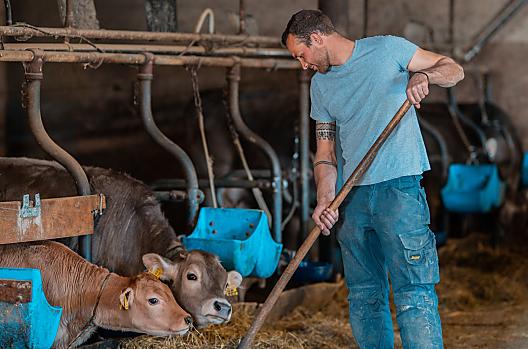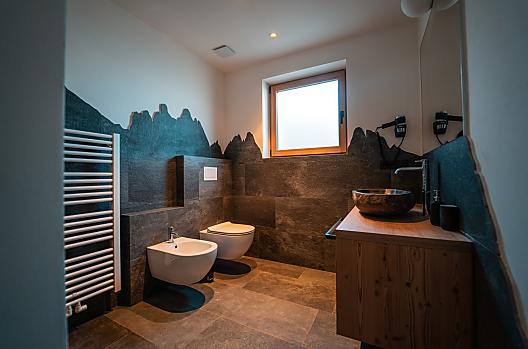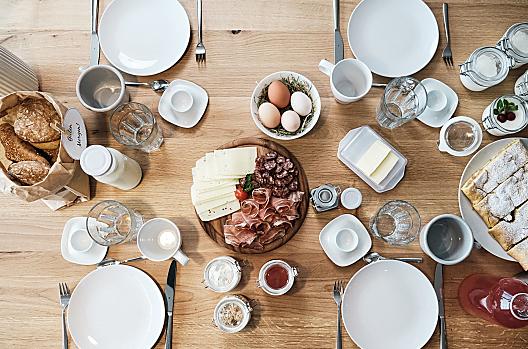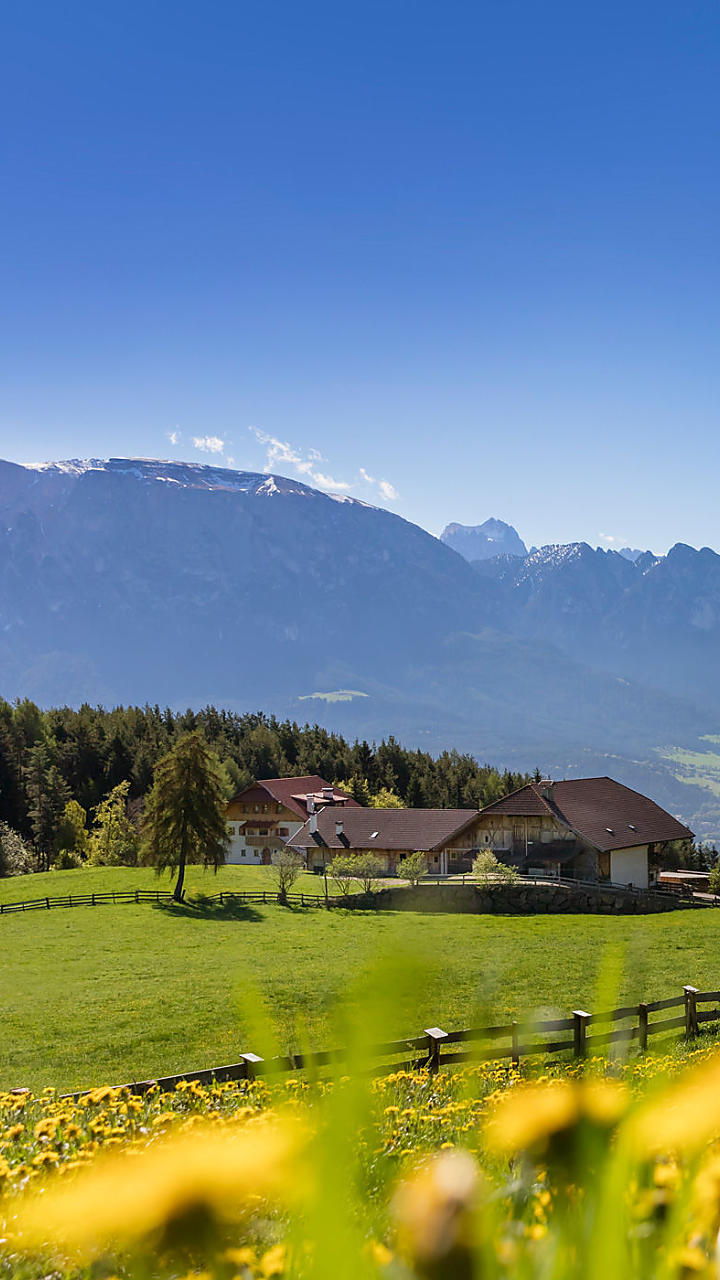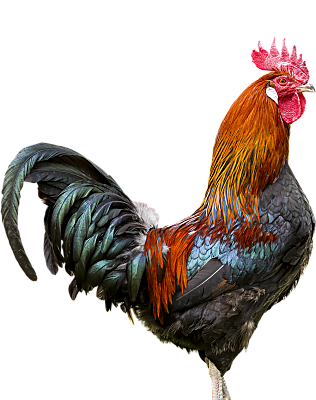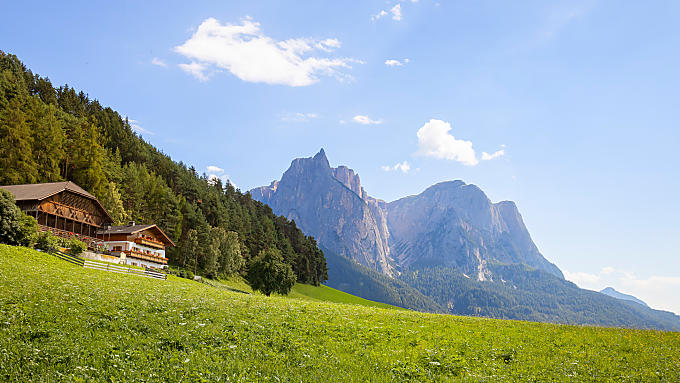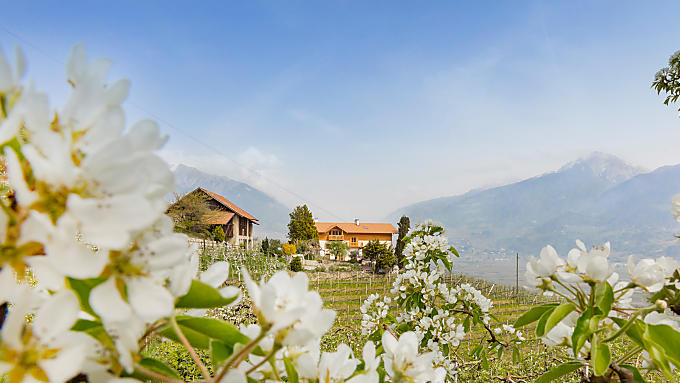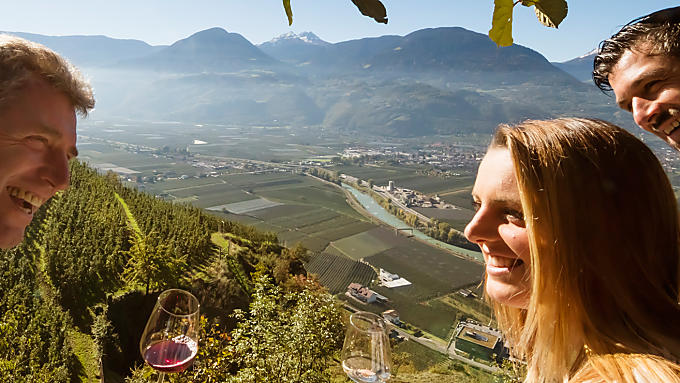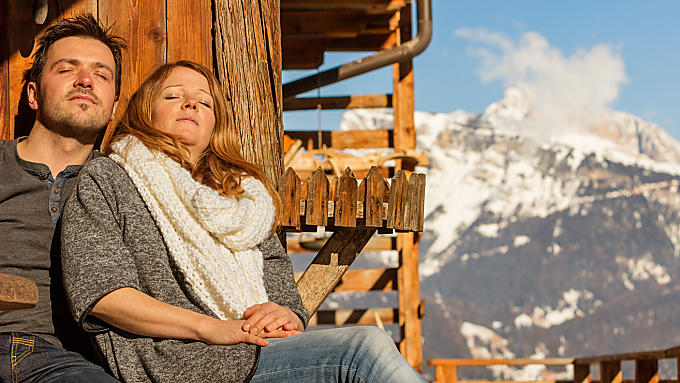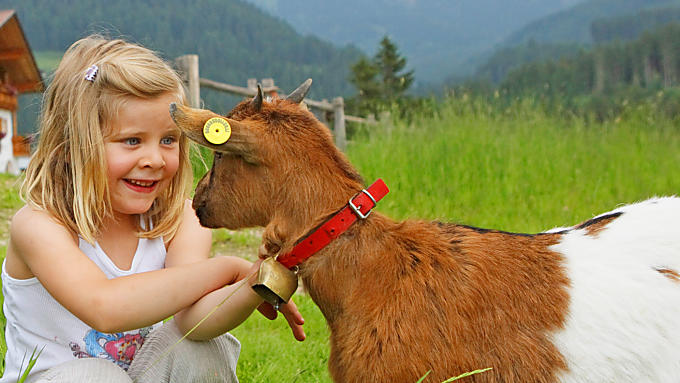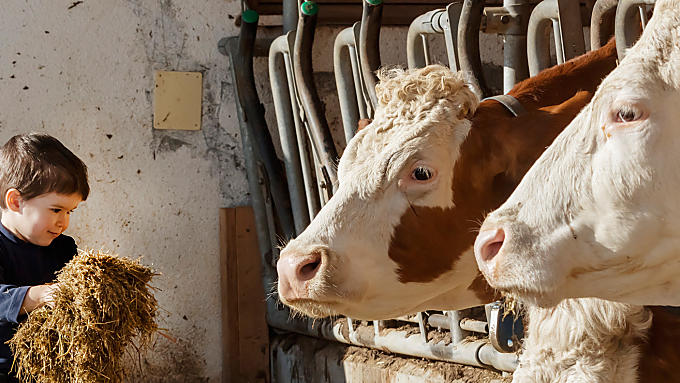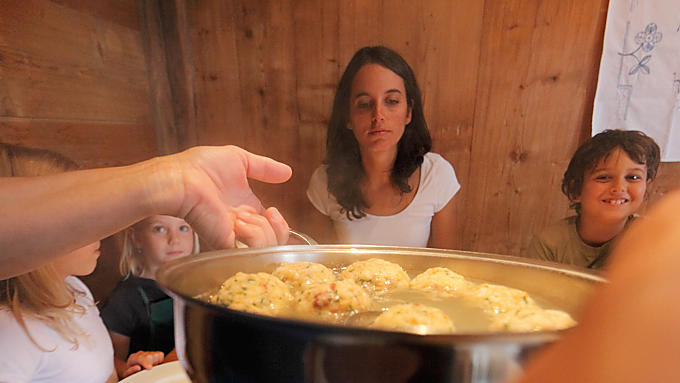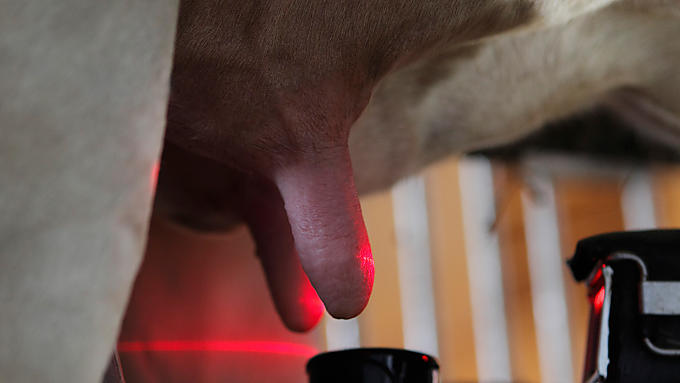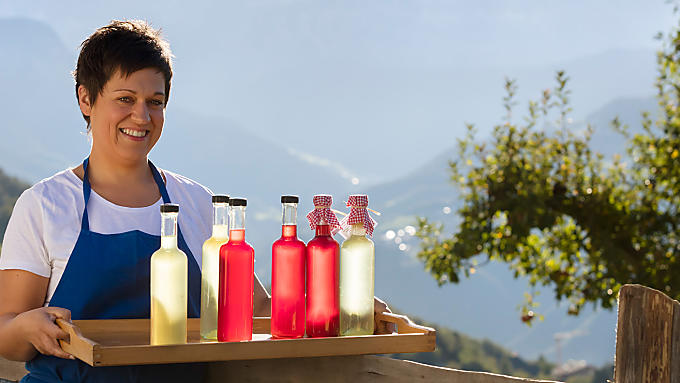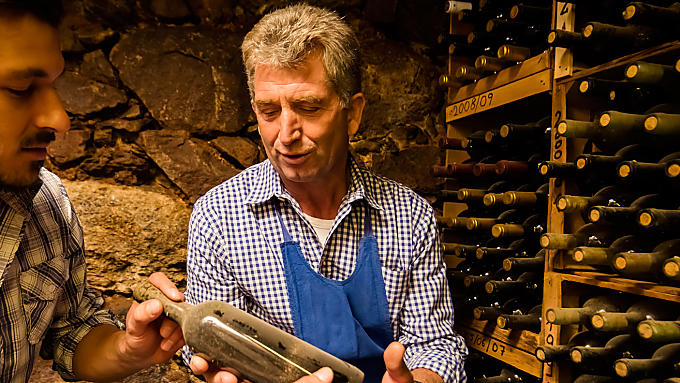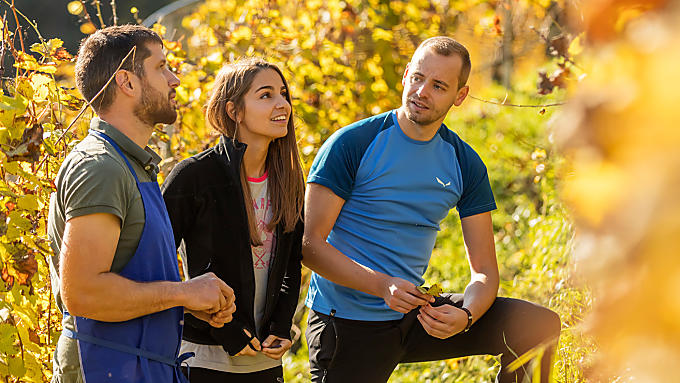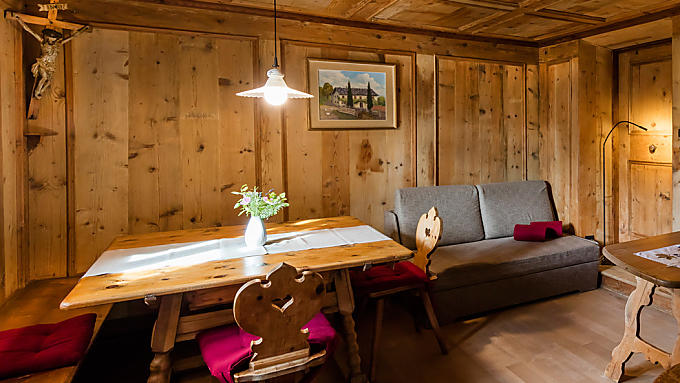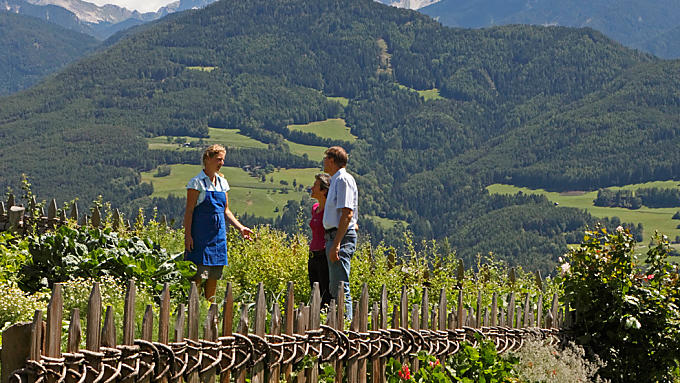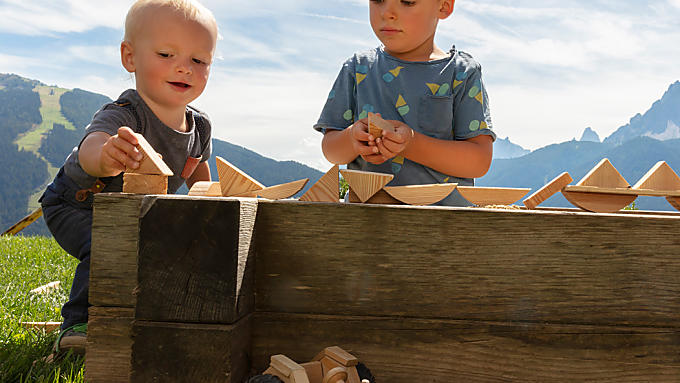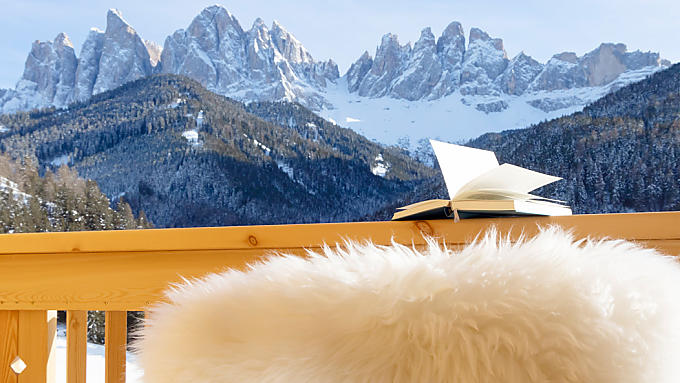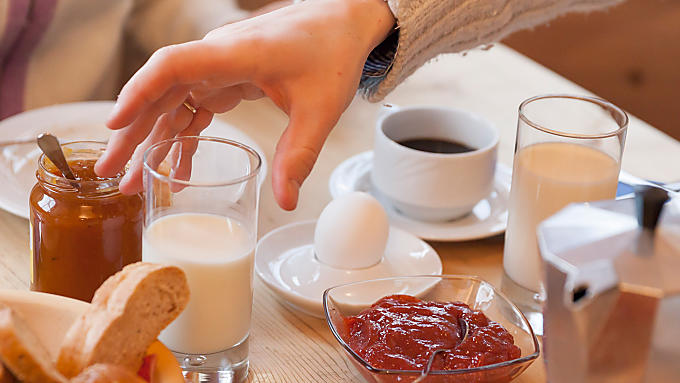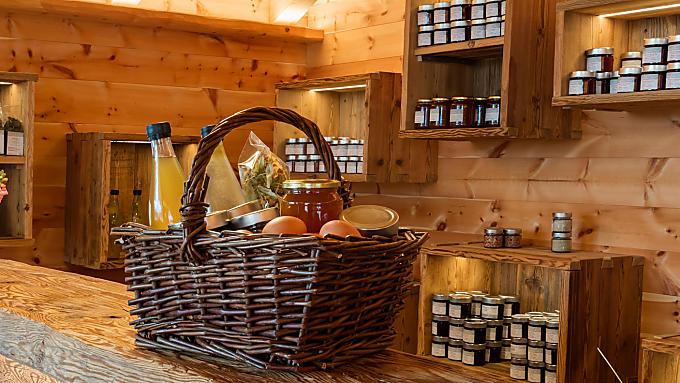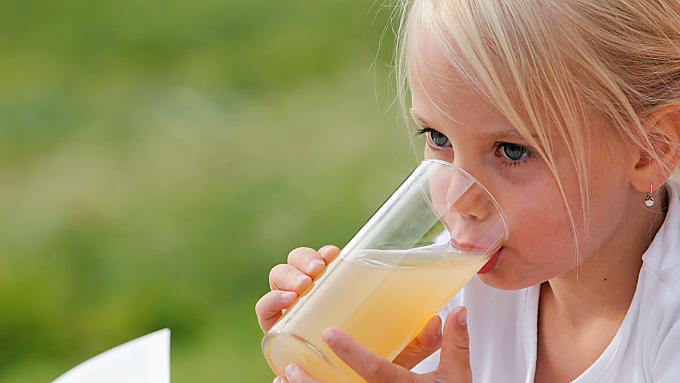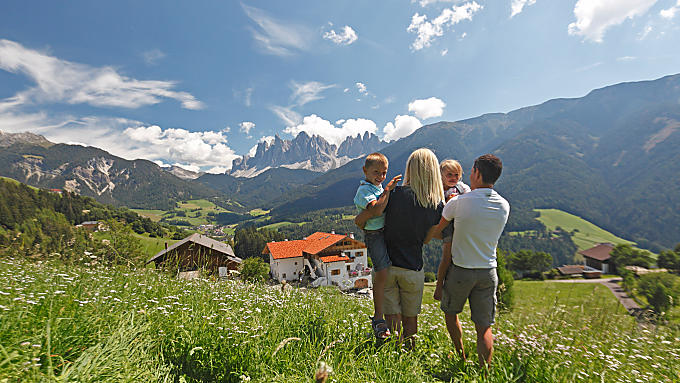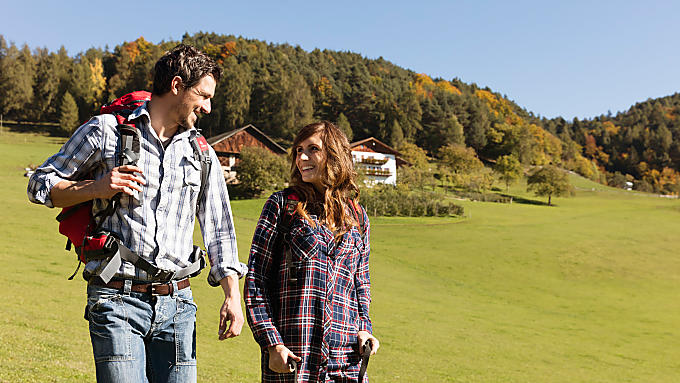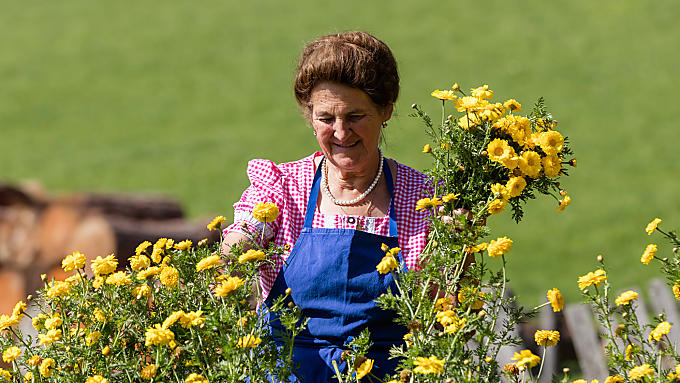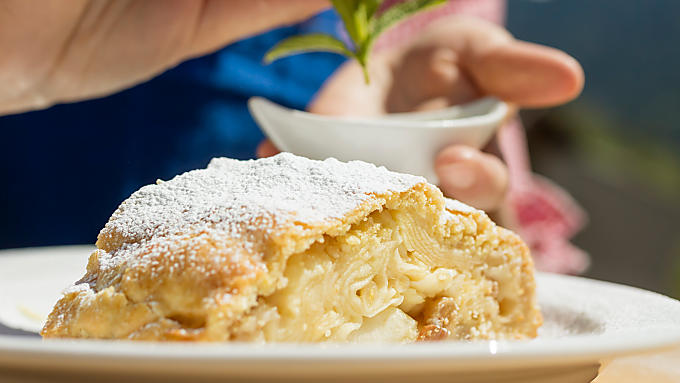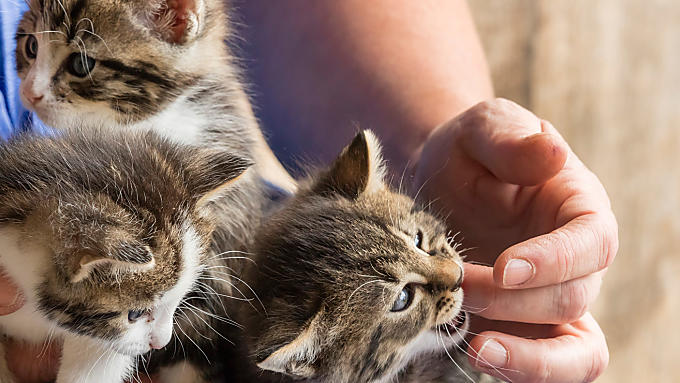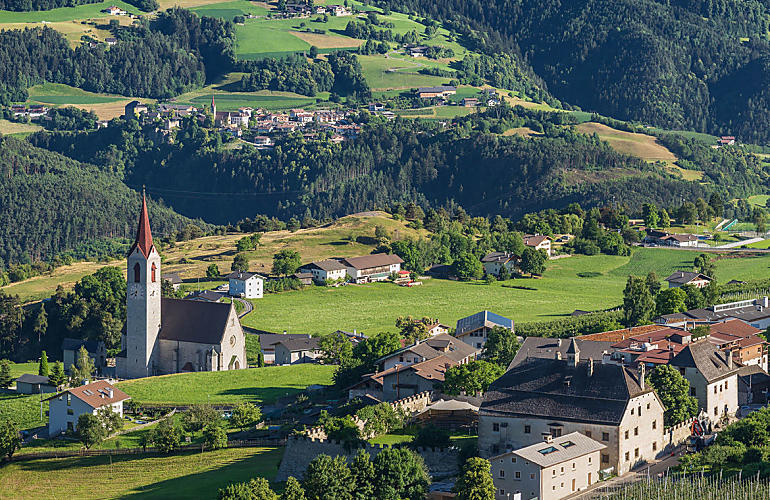
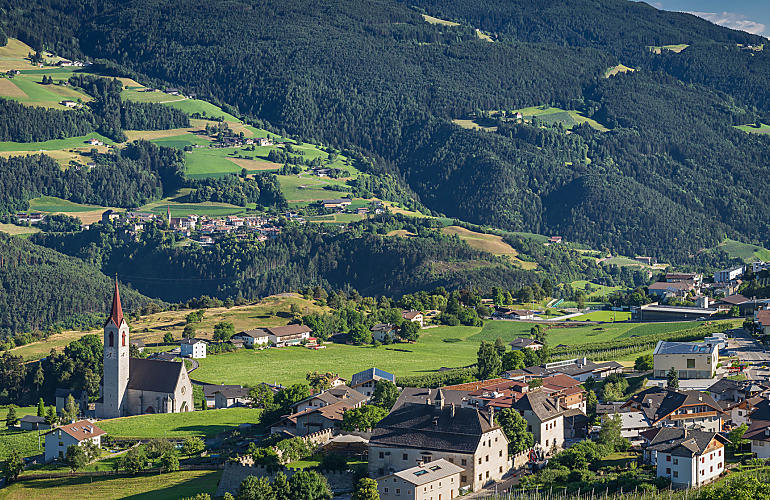
The chestnut village
Holiday location
Farm Holidays in Feldthurns
Feldthurns will reveal nature's diversity for those on a Farm Holiday: sweet chestnuts, wine and priceless views of the Geisler mountain peaks.
The little village of Feldthurns in the middle of the Eisacktal valley lies on a medium-high mountain plateau at around 850 metres above sea level and is famous for its long history of 'Törggelen'. Along with the main village of Feldthurns, the 2,800-person-strong municipality comprises the villages of Garn, Schnauders, Tshiffnon, Untrum, Pedratz and Schrambach. The area stretches from the valley basin to the peaks of the Sarntal Alps and lies abount eight kilometres south of Brixen. Scattered farmsteads, colourful mixed forest and splendid chestnut groves dominate the landscape.
Feldthurns will reveal nature's diversity for those on a Farm Holiday: sweet chestnuts, wine and priceless views of the Geisler mountain peaks.
The little village of Feldthurns in the middle of the Eisacktal valley lies on a medium-high mountain plateau at around 850 metres above sea level and is famous for its long history of 'Törggelen'. Along with the main village of Feldthurns, the 2,800-person-strong municipality comprises the villages of Garn, Schnauders, Tshiffnon, Untrum, Pedratz and Schrambach. The area stretches from the valley basin to the peaks of the Sarntal Alps and lies abount eight kilometres south of Brixen. Scattered farmsteads, colourful mixed forest and splendid chestnut groves dominate the landscape.
Chestnuts take centre stage
The tasty sweet chestnut has always been a valuable source of nutrition for the rural population of the Eisacktal valley. This nut, which keeps for a long time, was milled to make chestnut flour in the winter and allowed farmers to survive in difficult times. Chestnuts are an important part of the economy of Feldthurns even today. The over 3,300 chestnuts trees around the village of Feldthurns are today a symbol of the parish.
Each year, at harvest and 'Törggelen' time in autumn, the 'Keschtnigl-Wochen' take place in Feldthurns. The focus here is on 'Keschtn', or chestnuts, for a whole month and features a varied programme: guided tours, visits and concerts, tasting wine, chestnuts and other products characteristic of Feldthurns, a stroll down the 'Keschtnigl-Genussmeile' or the 'Nigl-Markt' and a chestnut cookery course. The large 'Keschtnigl-Sunntig' chestnut festival that sees the whole village meet for a spot of 'Törggelen' and involves trying the year's new wine and eating roasted chestnuts, is the crowning glory to the Eisacktal valley's fifth season.
Farm speciality - 'Krapfen'
Good food may be enjoyed on holiday in Feldthurns at other times of year, too. All year, typical green 'Krapfen' are cooked in the farm kitchens of Feldthurns. These long ravioli made from pasta dough and spinach are usually filled with 'Topfen' curd cheese and fried in lard. The sweet type of 'Krapfen' from Feldthurns made of wheat and rye flour and filled with a variety of home-made jams, poppy seed or chestnuts according to the season and fried in oil, come likewise highly recommended.
Feldthurns history and archaeology
Staying at a holiday flat in Feldthurns does not just promise a back-to-nature experience and good food, but varied cultural options, too. The sunny plateau of Feldthurns was settled back in 5000 B.C., as excavations carried out in 1983 in the Tanzgasse alleyway in the centre of the village indicate. Nowadays, the Feldthurns Archeoparc, where visitors may see a cult site from the Copper Age, occupies that spot.
The castle of Schloss Velthurns is a special historical monument. This summer residence of the prince-bishops of Brixen goes back to the 16th century and is considered one of the most impressive cultural monuments in South Tyrol. The castle is now a museum housing some of the most significant works of Renaissance ornamental carpentry in the southern German area. On the ground floor of Schloss Velthurns, there is an archaeological exhibition of finds from Feldthurns and Eisacktal valley.
Chestnuts take centre stage
The tasty sweet chestnut has always been a valuable source of nutrition for the rural population of the Eisacktal valley. This nut, which keeps for a long time, was milled to make chestnut flour in the winter and allowed farmers to survive in difficult times. Chestnuts are an important part of the economy of Feldthurns even today. The over 3,300 chestnuts trees around the village of Feldthurns are today a symbol of the parish.
Each year, at harvest and 'Törggelen' time in autumn, the 'Keschtnigl-Wochen' take place in Feldthurns. The focus here is on 'Keschtn', or chestnuts, for a whole month and features a varied programme: guided tours, visits and concerts, tasting wine, chestnuts and other products characteristic of Feldthurns, a stroll down the 'Keschtnigl-Genussmeile' or the 'Nigl-Markt' and a chestnut cookery course. The large 'Keschtnigl-Sunntig' chestnut festival that sees the whole village meet for a spot of 'Törggelen' and involves trying the year's new wine and eating roasted chestnuts, is the crowning glory to the Eisacktal valley's fifth season.
Farm speciality - 'Krapfen'
Good food may be enjoyed on holiday in Feldthurns at other times of year, too. All year, typical green 'Krapfen' are cooked in the farm kitchens of Feldthurns. These long ravioli made from pasta dough and spinach are usually filled with 'Topfen' curd cheese and fried in lard. The sweet type of 'Krapfen' from Feldthurns made of wheat and rye flour and filled with a variety of home-made jams, poppy seed or chestnuts according to the season and fried in oil, come likewise highly recommended.
Feldthurns history and archaeology
Staying at a holiday flat in Feldthurns does not just promise a back-to-nature experience and good food, but varied cultural options, too. The sunny plateau of Feldthurns was settled back in 5000 B.C., as excavations carried out in 1983 in the Tanzgasse alleyway in the centre of the village indicate. Nowadays, the Feldthurns Archeoparc, where visitors may see a cult site from the Copper Age, occupies that spot.
The castle of Schloss Velthurns is a special historical monument. This summer residence of the prince-bishops of Brixen goes back to the 16th century and is considered one of the most impressive cultural monuments in South Tyrol. The castle is now a museum housing some of the most significant works of Renaissance ornamental carpentry in the southern German area. On the ground floor of Schloss Velthurns, there is an archaeological exhibition of finds from Feldthurns and Eisacktal valley.
Farm search
Holiday farms in Feldthurns
3 reasons
A holiday in Feldthurns
Via Radlsee lake to
Königanger peak
Velthurns Castle
dominates the vilage
Old chestnuts groves
line the Chestnut Trail
Sporty and active
A holiday on a farm in Feldthurns affords lots of different ways to explore the sunny plateau out hiking. For example, the second stretch of the Eisacktal Chestnut Trail with its rustic inns runs past Feldthurns in the Barbian direction, but may also be finished by going down to Klausen.
A holiday on a farm in Feldthurns affords lots of different ways to explore the sunny plateau out hiking. For example, the second stretch of the Eisacktal Chestnut Trail with its rustic inns runs past Feldthurns in the Barbian direction, but may also be finished by going down to Klausen.
Mighty chestnut trees, which dominate the landscape like no other tree, are constantly in view.
Feldthurns has a lot to offer apart from chestnut groves. The cycle path following the Brenner route goes past Schrambach in the valley basin, attracting cyclists out on long bike rides and hikers out on walks on the banks of the Eisack river. There are lots of mountain pastures up in the Sarntal Alps, such as Latzfonser or Feldthurner Alm pastures, which are working all year round. Anyone wishing to head further up should climb the 2,439-metre-high Königanger mountain or hike to the Radlsee lake with its mountain refuge. There is the chance to try out a different type of sporting activity in the form of some traditional hay mowing on Eisacktal mountain pastures as part of the 'Feldthurner Bergwoche' programme.

